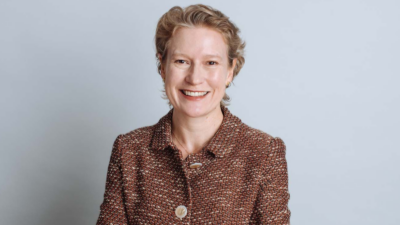Trimantium tech tour: why deals don’t travel to Australia
(pictured: Phil Kingston)
By Patrick Liddy*
Technological innovation has become so linked with the growth of not only companies but also whole economies that many Australian states are seeking to copy the US successes by setting up “centres of excellence” to promote development.
But after endeavouring to breathe new life into old clichés what they are trying to emulate is difficult to do and it shows why the best investments do not even make it into print, let alone to our fair shores.
This is much to the detriment of our macro economy and is hurtful to both Australian investors and super fund members alike. Perhaps it is as Francis Bacon coined: that “Mohammed must go to the mountain.” Or maybe it is a mix of both.
The two best examples of technological innovation in the US in terms of cities are Los Angeles and San Francisco. Both these areas have the infrastructure, people, institutions and money to invest. Both these areas are where Trimantium, the Australian-based private equity manager, has deep contacts. Both these areas are what Australian governments are trying to emulate.
On Trimantium’s previous study tour to Northern California Bay Area, last year the manager and investors visited two distinct districts – the traditional, hard core tech-focused Silicon Valley centered on Santa Clara, and the startups of all kinds in San Francisco’s Mission District and its surroundings.
On the latest study tour to Southern California, the firm and its various investors and other guests, visited the key hubs which are defined as Silicon Beach around Santa Monica area and towards the mountains.
This is not far from the enchanting Jonathan Club, which quickly became a favorite of mine – overlooking the beach, nice people and an even nicer Napa Valley Pinot. Also naming it after one of my friends was a good touch.
We visited accelerators, incubators, co-working spaces, startups and business services companies. Along the way, investors were introduced to key decision makers. All jockeyed for the best positioning, as it’s important to be at the centre of activity, particularly for those catering to the millennial generation.
We toured those entrepreneurial districts that have tended to spring up around well-regarded universities such as Stanford in Palo Alto and Caltech in Pasadena. The entrepreneurial districts also have been built around big-brand tech companies such as Snapchat in Venice (great view), Facebook in Menlo Park, Twitter in San Francisco, Hulu in Santa Monica and startup accelerator Idealab and Alibaba’s new base in Pasadena. We even ventured to gritty areas of downtown LA, which are seeing new life in the form of The La Kretz Innovation Campus and Hyperloop One (something that may just revolutionise the world economy, but how many people in Australia know about it?).
What is clear is that it is a whole biosphere that feeds and expands on its own different elements – great universities, big brand tech companies, ingrained tight relationships, frontier mentality and speed. And being at the center of things counts. Replicating this is not easy.
One of the key people behind the Trimantium trip, Phillip Kingston, very much laments the “tyranny of distance” that continues to put Australia and Australians at a disadvantage. He advises Australian Governments on how to create the right technology environments and helps investors to get access to the right people in the US.
Kingston believes there are three main elements to making it work, or not work, for investors. They are: speed, relationships and distance.
Speed – “The best deals are fully invested within four hours,” Kingston says. One of the examples he sights is colour. A company that through a saliva test can pretty well tell if you have cancer or will have a probability of getting cancer. This it does with cruel accuracy. (I went online and bought a kit myself).
“The colour deal was sold out within hours. We knew who and how to get in.” That can only happen if you are on the ground and know the pertinent people.”
Kingston points out that relationships are equally important. You must know the right people because these deals tend to flow to a particular segment of successful investors. These investors tend to evaluate on the track record and business expertise of the company principals. “They are investing their own money and have done it successfully many times over, that is why we only co-invest with them that way.
Distance – Kingston says: “The best deals do not travel far, if at all. If you get it in on an IM [information memorandum] or you get it in a deck it is probably too late.” Little of real value will make it to Australia. The value will be taken by those with knowledge in the jurisdiction it germinated in. “That’s just the way it’s done. We work hard to get investors to understand this and the processes, people and places involved.”
*Patrick Liddy, of MSI Group, travelled to California early this month as a guest of Trimantium. This is the second in a series of articles about the study tour.









